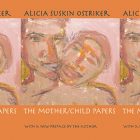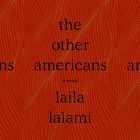Forensic Architecture and César Aira’s Ghosts

In César Aira’s 1990 novel Ghosts (translated into English from the original Spanish in 2009 by Chris Andrews), a luxury high-rise in the last stages of construction in Buenos Aires is inhabited by a Chilean security guard and his family until the new tenants can move in. The plot is kept light; we follow their daily activities as they move around the empty building and prepare for the New Year feast. They are, however, not alone. Naked, dusty pot-bellied ghosts roam the place, occasionally interacting with the living and engaging in body humor. These spirits, as Aira reminds us in several scenes, have penises. Ridiculous, absurd penises that can stretch longer than your arm and snap back like rubber bands. Such plasticity is striking when juxtaposed with the concept of ghosts, whose immateriality is the reason why people fear them in the first place. What to make, then, of these ghosts who straddle the physicality of the living while haunting a building that has not yet been abandoned, let alone lived in?
To explain these various states of uncanniness, Aira comes up with the term unbuilt to describe the bridge between what has been built before, and what will be built in the future. This is also the way he looks at art, at the dreamlike space that exists between the moment when an idea emerges, and the moment when the idea materializes. In other words, where intent finds direction. Famously, Aira likes to use automatism to drive his writing, a method where intent must find a conduit quickly, and instinctively.
Outside of literature, intent tends to be associated with the world of forensics, as investigators must uncover evidence of intent in order to draw a legal line between an accident and a crime. The research group Forensic Architecture, for example, produces and presents architectural evidence in legal and political processes involving state violence. A multidisciplinary body that includes architects, lawyers, software designers, scientists, filmmakers, and writers, the group has tackled issues such as urban warfare and environmental catastrophe, but also property speculation and gentrification. The broadness of their approach gravitates around the Latin definition of forensis, meaning an open forum, a space open to the public. And it makes sense, since the public interacts with buildings, with streets, with landscapes. As creatures of our environment, we investigate our surroundings to find meaning. We investigate the structures in place to discover whether we are the victims, the perpetrators, or the bystanders being kept away by design. Forensis, channeled through architecture, is a useful lens through which to parse the settings we create in fiction, and the ones we revisit in memoirs.
When I think of the bombing of Laos, for example, I think of all the structures that support the logistics of violence. The factories that built the bombs, the factories that built the planes, the hangars that housed the planes, the refugee camps that housed the refugees, the re-education camps, the hospitals, the rice farms. I ask myself if a building can ever escape the intent in which it was built. Can the punishing design of a prison be conducive to rehabilitation? Can a hotel redistribute its profits locally and permanently? Can a high-rise ever be egalitarian? Sometimes I try out magic equations in my mind to figure out if buildings are fatalistic, like architectural breadcrumbs, leading us to one very specific fate. Is the purpose of a building different than its intent?
Is the ending in Ghosts inevitable?
Tragedy strikes at the end of Aira’s novel when the ghosts invite the eldest daughter of the security guard to a magic Midnight Feast. Though the ghosts are the ones who trigger the chain of events, the building has cast something of a spell over her, drawing her away from the city and the streetlights, a spectacle she finds “uninteresting.” Remaining inside, she begins to see even nature through an architectural eye: “Dusk. . .was a construction, not governed by chance, as one might have supposed in the case of a meteorological phenomenon, but well-thought out; or rather, it was itself a kind of thought. The largest conceivable spaces were transformed in instants, and under covering layers like roofs or paving stones, grids of shadows, light and color formed.” In the absence of chance, she reduces life to a vertical stratification of “layers or doors through which one could enter or exit,” a metaphorical high-rise of binary choices. You either enter, or you exit.
The actual high-rise in Ghosts has a more straightforward purpose: to eventually house rich Argentinian families. But can a building also have intent? If the long-term ramification of the building is shielding the rich from the poor, then it can also be said that the building’s true intent is to eliminate the poor. In a digressive paragraph, Aira ruminates on the dreamscape that is projected onto architecture:
But the Australians, what do the Australians do? How do they structure their landscape? For a start they postulate a primal builder, whose work they presume only to interpret: the mythical animal who was active in the ‘dreamtime,’ that is, a primal era, beyond verification, as the name indicates. A time of sleep. The visible landscape is an effect of causes that are to be found in the dreamtime.
In essence, Aira says that architecture is a language, a manifestation of our unconscious into reality; it is a diorama of our humanity, rendered in miniature form, shaped by our dreams. So what should we make of the dreams of architects who create buildings of inequity? Are they truly dreaming of an existence where only those who have access to power and money can live suspended in luxurious apartments overlooking the city? If hostility is the intent, then ghosts surely are created from it, and the consequences that ensue—displacement, isolation, shorter life expectancy, pollution, etc.—have always been part of the gentrifying blueprints.
I thereby submit a retroactive reading of intent through the architectural embodiment. I submit that the consequences of our architecture are not accidents.
At one point in the novel, the security guard tells the story of a ghost who gets shot by a hunter who did not see it. Instead of flying right through the incorporeal apparition, the bullet hits the ghost and it begins to bleed, another reminder of the physical state of these spirits that cannot die yet remain vulnerable. Even in death, they do not gain the luxury of keeping pain in the past, or even below them, at ground level with the common mortals. Luxury, after all, is for the rich. Nakedness is for the ghosts and the poor, flickering between invisibility and physical vulnerability, their dispossession clear for all to see.
In an essay about haunted houses, writer Colin Dickey points out this socio-economic disparity in ghost stories:
The archetypal haunted house story is often really about class, about the rich who don’t understand the land or the people or the history and blunder into the landscape, attempting to buy their way into a community, blithely oblivious to the locals nearby. The town grows resentful because, by the force of economics, they are imprisoned by the rich and their folly—haunted by forces beyond their own control.
The condominium in Ghosts is thus revealed to be a folly through tragedy, a story as old as settler colonialism, where the possession of a landscape is at the heart of every war and every haunting. A flawed reflection of our dreams, it builds two distinct realities, even across death: one for the rich, one for the poor. But as Aira comments, architecture in fiction can be unbuilt. In his words, “it is possible to imagine an art in which the limitations of reality would be minimized, in which the made and the unmade would be indistinct, an art that would be instantaneously real, without ghosts. And perhaps that art exists, under the name of literature.” Which is to say, architecture that is unbuilt can be rebuilt through language. Not in an abstract, metaphorical way, but by re-imagining the reality we would like to see emerge from our dreams so that we can draft it anew.



